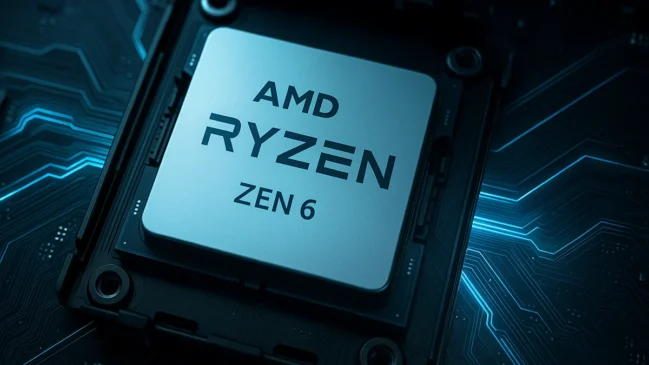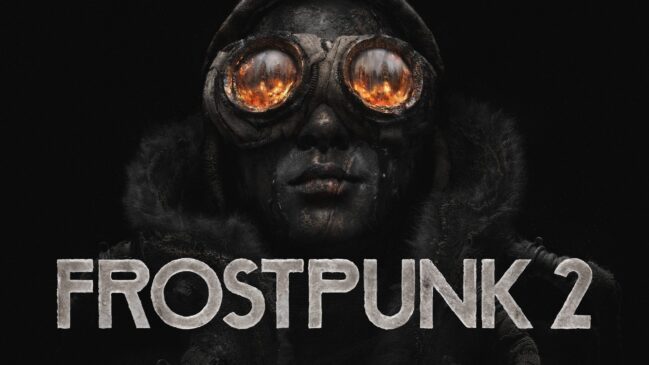
The Precinct is a fascinating experiment in flipping the classic open-world crime formula on its head. Rather than embodying the role of a lawless outlaw, you suit up as Officer Nick Cordell Jr., a rookie beat cop in 1983’s grimy, rain-soaked Averno City. Over roughly a dozen hours of gameplay, Fallen Tree Games and publisher Kwalee deliver a top-down sandbox where your primary tools are not rockets and machine guns, but handcuffs, caution, and compliance with procedure. The result is sometimes novel and frequently charming, but it isn’t without its rough edges.
AT A GLANCE
Engaging Sandbox Gameplay – Emergent, dynamic police work encourages creativity and player agency over scripted missions.
Authentic 1980s Atmosphere – A nostalgic blend of retro visuals and synth-heavy soundtrack creates a distinctive noir vibe.
Responsive World Design – Living city systems with procedural crimes and traffic make Averno feel reactive and immersive.
Simple Yet Effective Story – Light narrative serves its purpose, allowing the open-world mechanics to shine.
Minor Drawbacks – Some repetition and lack of polish in AI or animations, but easily outweighed by the game’s charm and ambition.
Story & Setting
The narrative in The Precinct serves as a grounded yet compelling backdrop for the game’s sandbox policing experience. You step into the shoes of Officer Nick Cordell Jr., a rookie cop freshly assigned to a crime-ridden precinct in the fictional city of Averno. The story sets a familiar tone, evoking the gritty atmosphere of classic police dramas and 1980s action thrillers. What starts as a routine assignment quickly unravels into something deeper, as Nick begins to uncover threads of corruption, gang violence, and a hidden past tied to his own family legacy. The game doesn’t rely on cinematic spectacle or overly dramatic cutscenes—instead, it unfolds organically through your day-to-day shifts, conversations over the police radio, and the evolving city landscape.
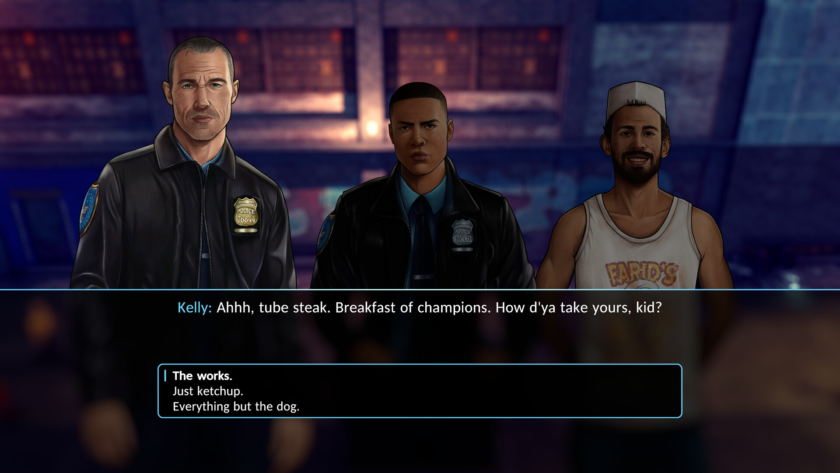
There are moments of subtle storytelling scattered throughout: a quiet chat with a veteran partner who hints at the precinct’s darker history, or a side mission that reveals the impact of your policing on the local community. Though the main narrative is not overly complex, it effectively complements the open-world structure, giving context and weight to your actions without locking you into rigid mission paths. This design choice allows for a more emergent form of storytelling, where the tension and drama often come from how the city responds to your presence and decisions. The game also toys with moral ambiguity, hinting at larger systemic issues without beating the player over the head with a message. Overall, The Precinct weaves its story with restraint and nuance, offering just enough narrative structure to keep you engaged while letting the real drama unfold on the streets of Averno.
Gameplay Mechanics
The gameplay in The Precinct offers a refreshingly grounded take on the open-world genre, trading in bombastic shootouts and chaotic set pieces for a more methodical, procedural approach to police work. Set in a stylized, top-down isometric city, the game places players in the role of a beat cop navigating a dynamic shift system. Each shift—day, night, traffic, or gang unit—introduces different crime patterns, civilian behavior, and environmental conditions that change the feel of patrols. For example, day shifts focus more on traffic stops and minor infractions, while night shifts increase the likelihood of violent crimes, gang activity, and unpredictable emergencies. These shifts lend structure to the game’s open-ended loop, giving players a sense of rhythm and responsibility within a constantly evolving city.
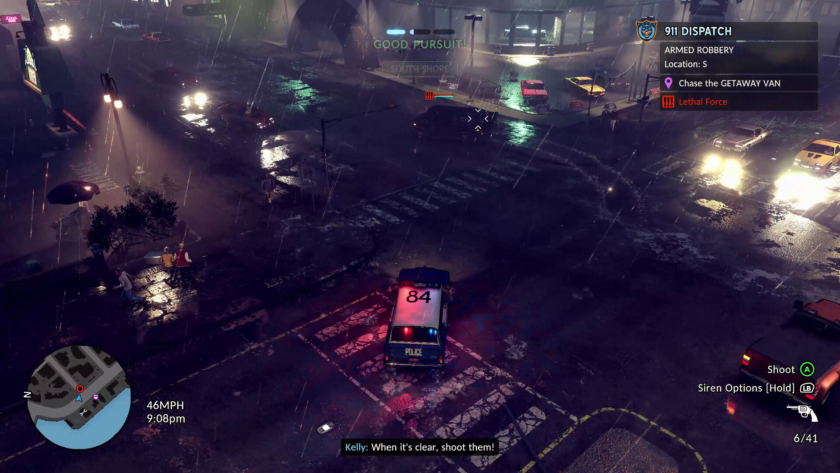
The heart of the experience lies in its procedural interaction system. Unlike most games that emphasize quick reaction or combat, The Precinct encourages players to engage with suspects, witnesses, and traffic violators in a step-by-step fashion that mimics real-world policing. You’ll initiate stops, run IDs and license plates, verify registrations, and make judgment calls about whether to issue a warning, a citation, or an arrest. This decision-making is rarely black and white. Acting too aggressively or skipping steps can penalize you at the end of a shift, while showing discretion and following proper protocol rewards XP and builds your character’s reputation. These interactions are navigated through contextual menus that require thoughtful input, making even a simple parking violation feel like a miniature puzzle of ethics, law, and observation.
Emergencies and call-outs form another critical layer of the gameplay loop. While patrolling, dispatch will alert you to incidents across the city, ranging from fistfights and shoplifting to gang shootouts and high-speed chases. These events are procedurally generated and often escalate in unpredictable ways if ignored, creating tension between responding to public needs and maintaining your original patrol route. The game rarely forces you to intervene—responding to every call is optional—but ignoring serious incidents might lead to consequences that ripple through the city’s crime systems. This sense of emergent chaos adds a welcome dynamism to the otherwise routine structure of daily shifts.
Driving and vehicle mechanics are central to the gameplay, particularly during pursuits. The isometric camera works surprisingly well here, offering a clear view of city blocks and traffic patterns, which is essential during high-speed chases. Vehicles handle with a responsive arcade flair—allowing for slick handbrake turns, tactical PIT maneuvers, and satisfying ramming physics. Police vehicles can be upgraded for durability, speed, or maneuverability, and more advanced tools like spike strips and aerial support are unlocked as players gain experience. What sets these chases apart from typical open-world action games is the importance of minimizing collateral damage. Running over a suspect or causing a pile-up due to reckless driving isn’t just discouraged—it’s actively penalized, pushing players to master clean, controlled engagements.
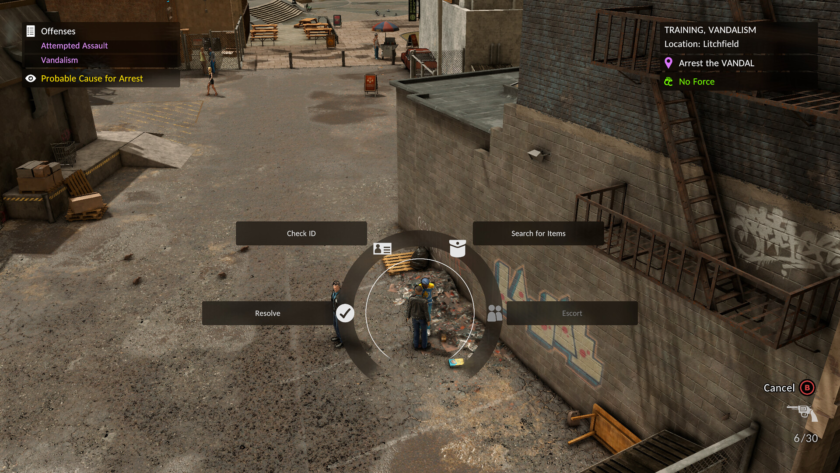
Combat, while present, is kept intentionally minimal. Officers are encouraged to resolve situations non-lethally using tasers, verbal warnings, or batons. Firearms are available, but using them triggers post-shift reviews and can lead to reputation loss if the force was deemed unnecessary. Gunfights are generally confined to higher-tier missions or emergencies gone wrong, and they feel more like the result of failure rather than a primary mechanic. The game’s cover system and aiming mechanics are serviceable but not the focus. Instead, the real tension comes from trying to prevent violence through good policing, not brute force.
Progression in The Precinct is handled through experience points awarded based on how well players perform their duties. Writing accurate reports, resolving conflicts lawfully, and responding to calls efficiently all contribute to end-of-shift evaluations. Promotions unlock new gear, better vehicles, expanded districts, and additional tools like dispatch commands or special unit access. There’s a clear sense of career development, but it never drifts into power fantasy—you’re always a patrol officer, albeit one with more authority and options. The satisfaction comes not from dominating the city, but from mastering its systems and maintaining order.
To keep the gameplay loop from becoming too repetitive, the game incorporates optional activities and mini-games, such as evidence logging, writing reports at the station, or setting up DUI checkpoints. These slower-paced elements contribute to the immersion, allowing players to lean into the simulation side of the experience. For players looking for constant thrills, this might feel mundane. But for those who appreciate roleplaying and methodical gameplay, it reinforces the fantasy of being part of a functioning justice system.
Overall, The Precinct delivers a uniquely thoughtful take on open-world policing, placing a premium on observation, restraint, and ethical judgment. It trades the chaos of most crime games for slow-burning tension and meaningful interaction, offering a gameplay loop that feels both immersive and refreshingly responsible. While the slower pace and repetitive nature of some duties might not appeal to everyone, the depth of its systems and the richness of its emergent gameplay make it a standout in a genre often dominated by over-the-top spectacle.
Visuals & Audio
Visually, The Precinct strikes a distinctive balance between stylization and realism, delivering an aesthetic that’s both functional for gameplay and evocative of a gritty, neon-drenched urban atmosphere. The game utilizes an isometric, top-down perspective, but it elevates this familiar viewpoint through a richly detailed, living cityscape. Weather effects and time-of-day transitions play a significant role in setting the tone—from golden-hour lighting casting long shadows across downtown buildings to rain-slick streets reflecting the glow of traffic lights and neon signs during nighttime patrols. The attention to ambient detail is impressive for a game in this perspective. Pedestrians bustle about with varied routines, vehicles move with realistic patterns, and the environment responds dynamically to the player’s actions, such as traffic backing up after a collision or crowds forming around a crime scene.
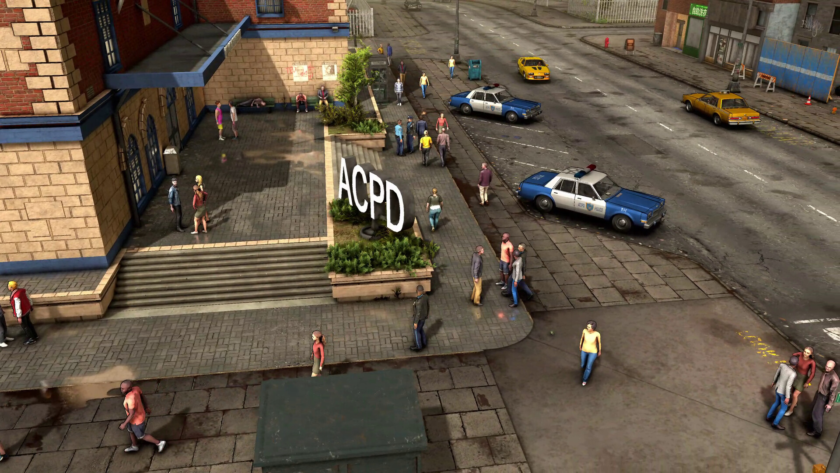
While character models and animations are somewhat minimalist up close, they are stylized to fit the retro-modern aesthetic, reminiscent of ’80s and ’90s cop shows, with an emphasis on silhouette and movement rather than facial detail. The user interface, meanwhile, is clean and immersive—avoiding clutter while delivering essential information through subtle HUD elements like radio messages and shift indicators. The city’s neighborhoods are also visually distinct, ranging from affluent suburbs and industrial zones to rundown inner-city blocks, each with their own color palettes and design language. This visual diversity enhances the experience of patrolling, making each beat feel fresh and grounded in a believable world.
Overall, The Precinct delivers visual storytelling that doesn’t rely on cinematic cutscenes but instead unfolds through the rhythm and texture of its city, creating an atmosphere that is as engaging as the gameplay itself.
Final Thoughts
Summary
The Precinct is a refreshing take on the open-world genre, blending nostalgic top-down aesthetics with modern gameplay sensibilities to deliver a grounded and immersive policing experience. While it may not have the bombast of big-budget titles, it excels in atmosphere, interactivity, and sheer moment-to-moment engagement. Its commitment to dynamic, procedural encounters over tightly scripted set pieces allows for emergent storytelling and replayability. The visuals, though stylized, beautifully capture the essence of a gritty 1980s city, and the soundtrack further enhances the mood with synth-driven intensity. The narrative, while understated, supports the gameplay with just enough intrigue to make your actions feel meaningful. Some players may find its slower pace and old-school presentation to be a departure from mainstream trends, but those looking for something more intimate, deliberate, and reactive will find The Precinct a compelling addition to the genre. It's a thoughtful, well-crafted sandbox that respects player agency and rewards curiosity, proving that sometimes, less really is more.




